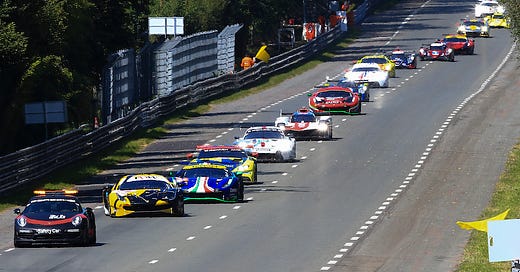INSIGHT: Why Le Mans is Changing its Safety Car Rules
The ACO’s Clement Hugon explains the reasons for introducing a new safety car system at the 24 Hours of Le Mans…
There was no doubting the standard at which Porsche’s GTE-Pro team operated to win its class at the 24 Hours of Le Mans in 2018. However, after the checkered flag, questions were raised about how it was able to dominate after gaining a huge advantage under an early safety car period.
The winning Porsche 911 RSR-19 pitted just before the safety car occurred, while its rivals came in during and were held at the end of the pit lane, causing them to fall two minutes behind the next of the three safety car vehicles.
Corvette Racing’s then-program manager Doug Fehan urged post-race: “We need to find a way to keep the groups clustered.”
Fast forward to now and the system has been revamped. The three safety cars, which are necessary due to the length of the 8.5-mile Circuit de la Sarthe, will be deployed but then merged into one queue.
Once that’s done, the pits will close and competitors sitting behind the safety car but ahead of their class leader will be authorized to perform a wave-by, driving around and re-joining the back of the line.
This is new for Le Mans, but already exists at other FIA World Endurance Championship rounds. The field will finally be tidied up into class order before racing resumes. It’s essentially a four-step process: deployment, merging, wave-by and drop back.
“The regulations this year are the outcome of a process that started five years ago,” explains Clement Hugon, deputy director of competition at the ACO, which runs the event.
“The race panned out in a certain way in GTE-Pro: two cars were split initially by the first safety car of the race. From then on, every year after the race, we have a team managers’ briefing and we conduct due diligence on the way the race went and how the regulations worked.”




